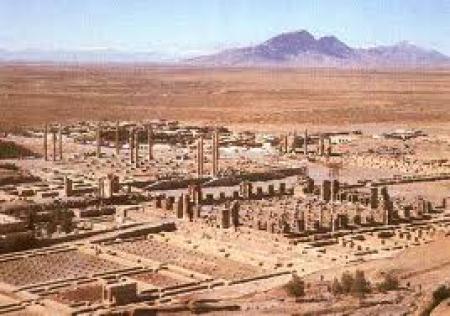Serendip is an independent site partnering with faculty at multiple colleges and universities around the world. Happy exploring!
Read between the Icons

Image above: Persepolis, capital of the Arachaemenid kings of Persia, now located in the province of Fars in southwestern Iran.
I have come to realize that I enjoy reading comics. I am more of a visual person and tend to be a slow reader, but what I found to be most intriguing about reading comics is the suspense in the gutter: the space in between the frames that calls for your boundless imagination to be filled. As Scott McCloud describes it in Understanding Comics, “human imagination takes two separate images and transforms them into a single idea” (66). The gutter allows for an imaginative, individualized experience as one sways their eyes from one frame to the next, connecting the trails of an unfinished story in their own mind.
Reading Marjane Satrapi’s Persepolis has been an interesting experience. I have read the first book in the sequel, The story of a Childhood, in the past but I was ready to apply the reading approach suggested by Scott McCloud to better understand the message between the iconic frames. Reaching the “Persepolis” chapter (p.26), I was excited to learn the story of Persepolis and why it mattered to Satrapi. The term Persepolis was surprisingly not mentioned at all in the chapter and I was rapidly reminded that words are but a part of the graphic novel story. Satrapi did leave an iconic hint of a warrior head in the title of the chapter that led me back to one of the panels with three rows of warriors. I went back a couple of frames and found that the icon of the warrior head appeared as the symbol of the Shah and prior dynasties, the head of Cyrus the Great, and an army of soldiers. In three consecutive frames, Satrapi describes her grandmother’s story as she narrates the Shah’s celebration of the 2500 years of dynasty during his coronation. He began his reign with ceremonial events over a past Persia and no promise for its future. Persepolis is the lost paradise, the Persian splendor, the worthy history of a proud people, and the remembrance of a wealthy past during the Islamic revolution. Satrapi did not live in the grandeur of Persepolis, but was faced with war and change that only allowed for reminiscence of the glorious past . Her childhood missed the greatness of her ancestors but she was faced with the clash of her own people. Not referencing the name during the chapter symbolically conveyed that regardless of the magnificence of her country’s past, her story is that of a Persia falling into rubble in a time of revolution.
This suspenseful reading experience was amusing as it allowed me to dig deeper into the icons and to complete a hidden story behind the icons. It is my interpretation of her story and I will hope to hear of your interpretations of the story behind Persepolis.
Image Source:
http://www.oznet.net/iran/persepol.htm



